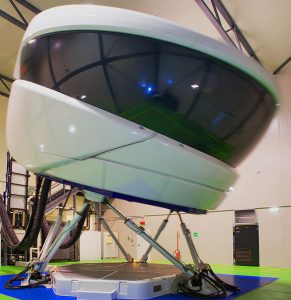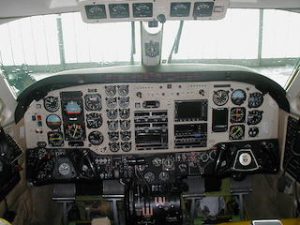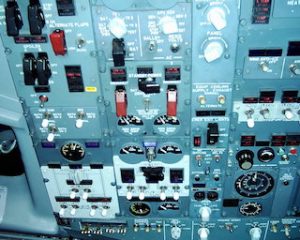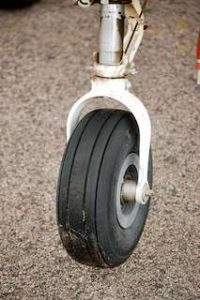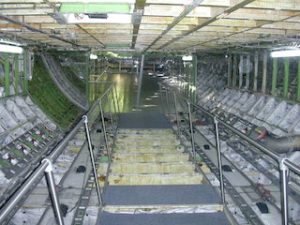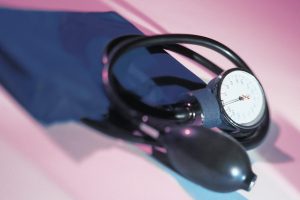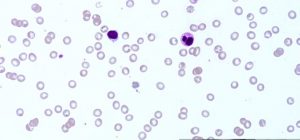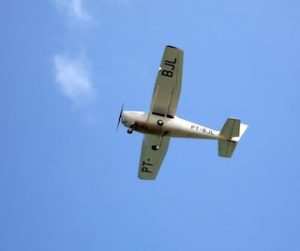Arm Veins In Astronauts In Spaceflight Missions
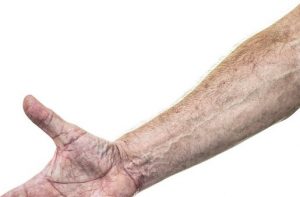 Arm veins appear more prominent in astronauts during extended space missions. Microgravity changes blood flow and body fluid distribution. This causes veins in the arms to enlarge and appear swollen. Arm veins adapt to altered pressure inside the body. Astronauts must prepare for these effects before boarding spaceflight missions.
Arm veins appear more prominent in astronauts during extended space missions. Microgravity changes blood flow and body fluid distribution. This causes veins in the arms to enlarge and appear swollen. Arm veins adapt to altered pressure inside the body. Astronauts must prepare for these effects before boarding spaceflight missions.
Microgravity changes blood distribution in arm veins
In space, gravity no longer pulls fluids down toward the legs. Fluids move upward, especially toward the head and chest. This sudden shift increases pressure in the upper body veins. Arm veins carry more blood volume and become more visible. This change happens within hours of entering orbit.
Body adapts to new fluid balance
The human body adjusts to fluid shifts over time. Veins in the arms stretch to hold increased blood volume. As veins stretch, they push closer to the skin’s surface. Astronauts see arm veins bulge more than on Earth. Over days, the body reaches a new balance in space.
Arm veins support upper limb activity
Arm veins help drain used blood from the muscles. Astronauts perform many physical tasks in space. These tasks use the arms more than the legs. More arm muscle activity needs strong vein function. Strong arm veins help maintain proper circulation during daily duties.
Vein changes affect medical routines
Astronauts receive regular health checks on orbiting stations. Doctors monitor arm veins for signs of pressure changes. Visible swelling can signal the need for circulation adjustment. Medical teams study arm veins to assess body adaptation in space. Vein appearance becomes a key health indicator.
Exercise strengthens vein function
Exercise helps control fluid movement and vein tone. Astronauts train daily using special space equipment. These sessions promote better blood return from the arms. As a result, arm veins function more efficiently under pressure. Vein walls also stay strong during longer missions.
Fluids move differently in zero gravity
Without gravity, veins cannot rely on natural downward pressure. Blood must travel back to the heart using muscle action. This extra effort causes veins to expand in low gravity. Arm veins, close to the chest, face this pressure faster. Therefore, their response appears sooner than leg veins.
Arm veins during spacewalk activities
Spacewalks require suits that apply pressure to the body. These suits compress arm veins slightly during operation. Astronauts report changes in arm sensations after spacewalks. The body needs time to return vein pressure to normal. Arm veins often appear darker and larger after walks.
Monitoring helps detect changes early
Veins offer clues about overall body function in space. Medical staff watch for irregular vein shapes or colors. Sudden arm vein swelling might suggest deeper issues. Early detection ensures astronauts stay healthy on long missions. Continuous observation supports long-term success in orbit.
Arm veins adapt during re-entry
Returning to Earth brings a rapid shift in pressure. Gravity suddenly pulls fluids back toward the lower body. Arm veins must release stored blood quickly. This causes momentary collapse or flattening of the veins. The body needs time to restore Earth-based circulation.
Circulation training prepares astronauts
Space agencies train astronauts to handle fluid changes. Sessions on tilt tables simulate headward fluid shift. Astronauts practice maintaining balance as veins adjust. These exercises focus on upper body blood return. Strong arm veins improve circulation under stress.
Fluid retention affects arm volume
Space missions can increase total body fluid retention. Sodium balance changes cause swelling in the arms. Arm veins stretch to manage this new volume. Crew members report tightness in sleeves due to fluid gain. This highlights the impact on upper limb veins.
Nutrition supports vascular health
Balanced meals in orbit help maintain vein structure. Salt levels influence how veins react to fluid shifts. Hydration levels affect how visible veins appear. A steady supply of vitamins supports vein elasticity. Arm veins benefit directly from consistent nutrient intake.
Space suits influence vein compression
Spacesuit design affects how veins behave during activities. Arm sleeves apply pressure to maintain proper blood flow. Compression helps prevent vein expansion during spacewalks. Designers adjust material tension based on vein response. Comfort and performance rely on optimal vein support.
Arm vein behavior in long missions
Long missions on the International Space Station reveal more changes. Veins stay enlarged for extended periods in orbit. Over time, they may lose elasticity due to prolonged stress. This requires careful monitoring by onboard medical teams. Regular exercise helps manage these effects.
Veins recover slowly after return
After months in space, veins take time to readjust. Some astronauts report lingering vein issues after landing. Arm veins, in particular, may stay prominent for weeks. Full recovery depends on circulation readaptation. Therapies help restore vein tone back on Earth.
Psychological impact of vein changes
Some astronauts become concerned by visible vein changes. Swollen arm veins can signal altered body state. Medical teams offer reassurance and education. Mental readiness helps reduce stress about physical differences. Clear communication supports astronaut wellbeing in orbit.
Arm veins in different gravity levels
Different planets have different gravity levels. Mars has weaker gravity than Earth. Moon gravity is even lower. These conditions affect vein response over time. Arm veins may stretch or shrink based on gravity strength. Space training adjusts for these variations.
Artificial gravity helps circulation
Some research explores artificial gravity in space habitats. Rotating systems could simulate gravity forces. This may reduce vein changes during long missions. Arm veins would return to Earth-like behavior. Scientists continue studying artificial gravity for future travel.
Arm vein research supports medicine
Studies of astronaut veins support health advances. Knowledge from space missions applies to patients on Earth. Doctors use findings to improve circulation treatments. Arm vein studies provide insight into fluid balance. Space research continues to shape vascular care worldwide.
Arm veins and astronaut safety
Safe blood flow ensures that astronauts perform well. Healthy veins allow for better nutrient delivery. Strong circulation supports brain and muscle functions. Monitoring arm veins keeps astronauts fit during travel. Blood flow must stay consistent for safe operations.
Preventive measures during missions
Astronauts wear compression garments during travel. These garments support arm vein function in microgravity. Design improvements continue based on space experience. Tools evolve to keep circulation safe and effective. Innovation grows from each new spaceflight mission.
Training with simulated microgravity
Neutral buoyancy pools simulate weightlessness on Earth. Astronauts train in these pools for long hours. Trainers watch how arm veins react to pressure. Such training helps astronauts manage future vein changes. Results guide future mission preparation programs.
Future of arm vein studies
Next-generation missions to Mars will last longer. Scientists expect more visible vein reactions in space. Future astronauts may face increased circulation shifts. Monitoring will expand to track arm vein changes. Research teams work hard to predict outcomes in deep space.
Returning circulation to baseline
Once back on Earth, astronauts undergo recovery programs. These programs guide vein readjustment. Fluid shifts reverse gradually during exercise and rest. Monitoring tracks how quickly veins return to baseline. Long-term care helps maintain vascular health post-mission.
Unique circulation in female astronauts
Female astronauts may show different vein reactions. Hormonal factors influence fluid retention and vein tone. Research includes both male and female vein patterns. These findings help tailor support systems in space. Inclusive study design improves mission outcomes for all.
Space medicine evolves with each mission
Every mission adds more knowledge to vein science. Arm veins show early signs of pressure change. Medical tools evolve with each discovery in orbit. Arm vein monitoring will remain part of every mission. This helps protect astronaut health far from Earth.
Protecting astronauts during exploration
Arm vein changes provide early signals in space. Recognizing them keeps astronauts safe during operations. Constant monitoring supports fast response to changes. Vein studies form part of exploration safety strategies. Astronaut care grows stronger with every new discovery.
Eyes on veins, minds on missions
Astronauts focus on duties while teams watch health. Arm veins continue to show the body’s status. Doctors and engineers use that data every day. Circulation support helps humans survive off Earth. Arm veins quietly serve those who travel the stars.
Space travel continues, veins keep pace
As astronauts explore space, their bodies face change. Among these, arm veins stretch, swell, and adapt. Each mission reveals how the body reacts to space. With each step forward, veins show how far humans can go. Arm veins, though silent, remain faithful travel companions.
